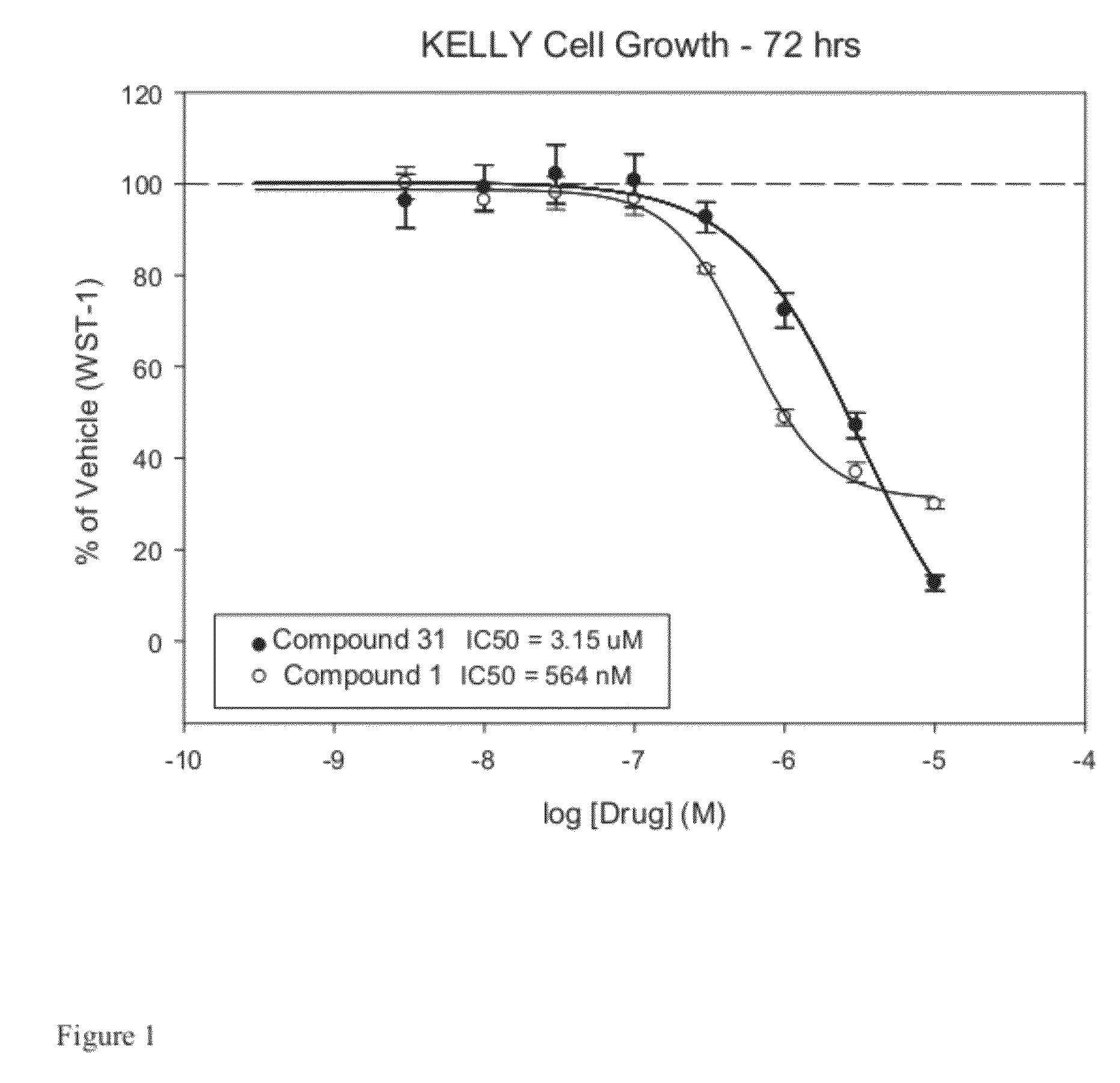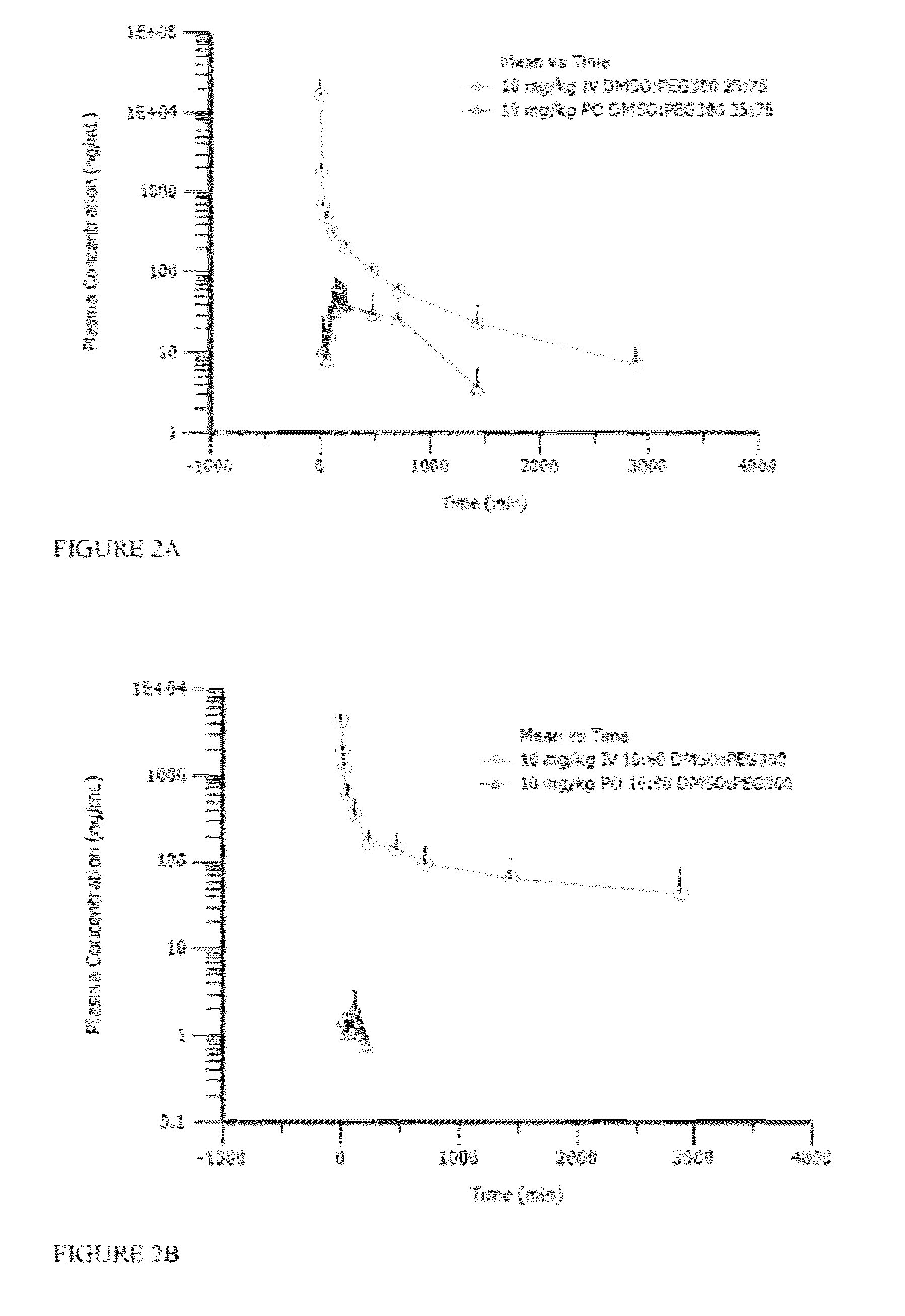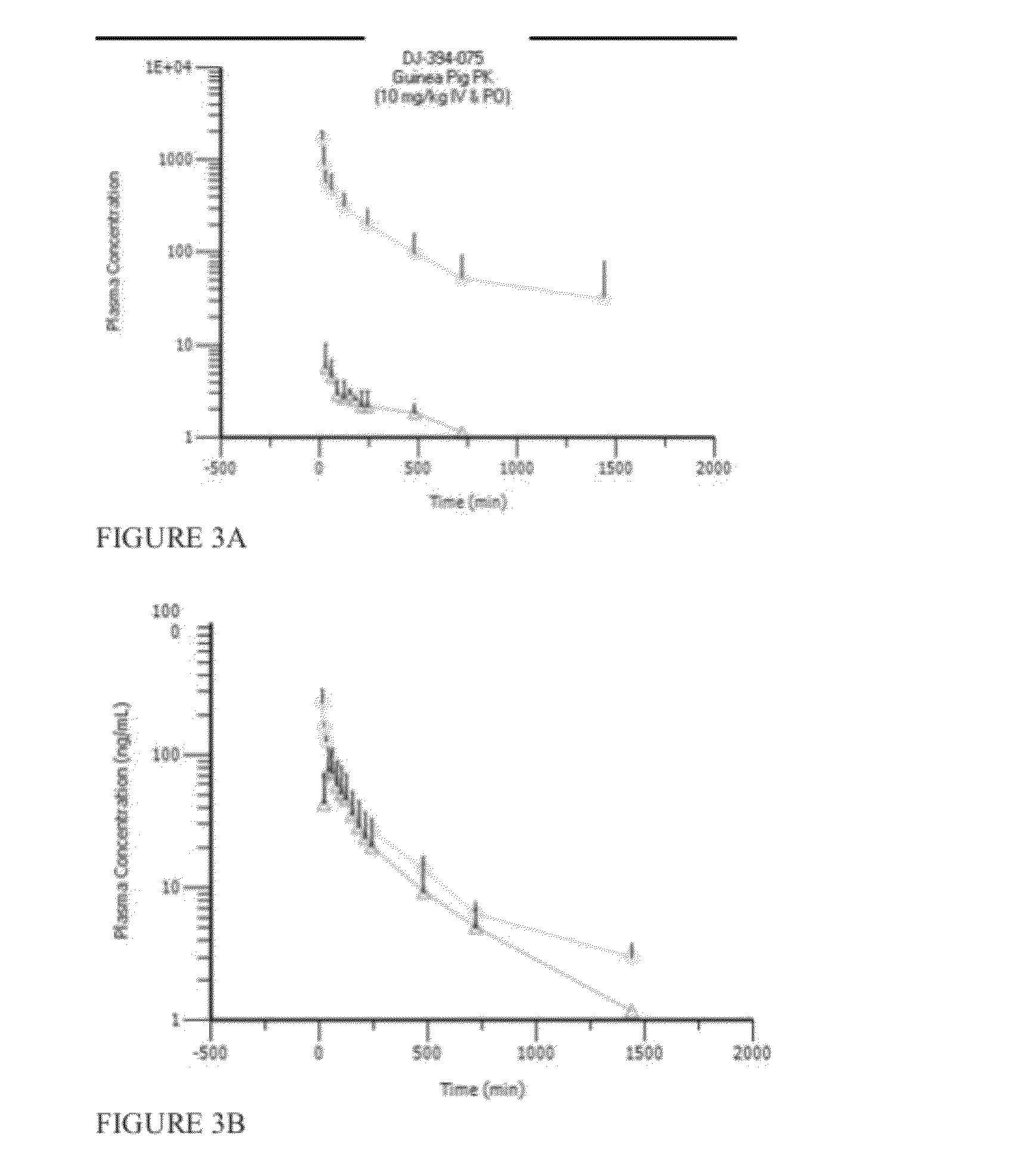Tyrosine kinase inhibitors
a technology of tyrosine kinase and inhibitor, which is applied in the direction of biocide, heterocyclic compound active ingredients, drug compositions, etc., can solve the problems of affecting the survival of patients
- Summary
- Abstract
- Description
- Claims
- Application Information
AI Technical Summary
Benefits of technology
Problems solved by technology
Method used
Image
Examples
example 1
General Procedures for Racemic Amphetamines
Synthesis of 1-(2,5-difluorophenyl)propan-2-amine (A)
[0286]The synthesis and procedures of this compound was described in Bioorganic &Medicinal Chemistry, 1992, 16, 4661-4669.
[0287]
1-(2,5-Difluorophenyl)-2-nitropropene
[0288]A mixture of 2,5-difluorobenzaldehyde (25.0 g, 0.176 mol), nitroethane (26.41 g, 0.352 mol) and cyclohexylamine (17.45 g, 0.176 mol) in 150 mL of acetic acid was stirred at 80° C. overnight. After cooling to rt the solvent was evaporated, the residue was purified by column chromatography (silica-gel, CH2Cl2 / acetone=19 / 1 v / v) to give a yellow solid product, 28.5 g, 81.3% yield. MS: 197.6 [M−H]−. 1H NMR (DMSO-d6, 500 MHz): δ 7.94 (s, 1H), 7.46-7.43 (m, 1H), 7.41-7.35 (m, 2H), 2.31 (s, 3H).
1-(2,5-Difluorophenyl)propan-2-amine (A)
[0289]In a dry flask were placed NaBH4 (9.50 g, 0.251 mol) and 300 mL of dry THF. The flask was cooled to 0° C. under argon and 42.76 g of BF3(Et2O) was added via a syringe. After addition, a soluti...
example 2
In Vitro Kinase Activity Assay
[0348]Compounds to be tested were dissolved in 100% DMSO in a range of concentrations from 10−8 to 10−3 M including negative control (DMSO), then diluted with Kinase Buffer (50 mM HEPES, pH 7.5, 1 mM EGTA, 10 mM MgCl2, 0.01% Tween-20, and 2 mM DTT, added fresh) to 4× the final concentration. The final curve included 11 concentrations (10−11 to 10−5 M) plus negative control DMSO tested in triplicate.
[0349]Kinase and ATP concentrations necessary for optimal activity were determined in separate experiments. (Table 2). Briefly, increasing concentrations of kinase were incubated in a fixed concentration of ATP (200 μM) in Kinase Buffer to determine maximal activity at various time points (30-120 min). The concentration of kinase that resulted in maximal activity with the shortest incubation time was then incubated in Kinase Buffer with increasing concentrations of ATP. The concentration of ATP that resulted in 50% maximal stimulation ...
example 3
Cellular Assays Using the Compounds of this Invention
Methods
[0355]Commercially available lymphoma (K299, U937, SUDHL-1) or neuroblastoma cells (NB-1) in log-phase growth were plated using RPMI (MediaTech) and 10% fetal bovine serum (HighClone) in 96-well plates at a density of 3,000-5,000 cells per well. An equal volume of RPMI (no FBS) containing drug solution (0.1%) was added. Concentrations ranging from 10−10 to 10−5 M were evaluated at half-log intervals in triplicate. The cells were allowed to proliferate for 3 days at the end of which cell viability was determined using WST-1 (Roche) reagent according to the manufacturer's instructions. The resulting absorbance values were represented as a percentage of untreated control and fit using a four parameter logistic model in Sigma Plot© (Systat Software) to determine IC50 values. The results are presented in the following Tables 4, 4a, 4b, and 4c.
[0356]
TABLE 4STRUCTUREALKIRKIGF1RTrKAK299#(completely hydrogen suppressed graphs)IC50(μ...
PUM
| Property | Measurement | Unit |
|---|---|---|
| weight percent | aaaaa | aaaaa |
| weight percent | aaaaa | aaaaa |
| weight percent | aaaaa | aaaaa |
Abstract
Description
Claims
Application Information
 Login to View More
Login to View More - R&D
- Intellectual Property
- Life Sciences
- Materials
- Tech Scout
- Unparalleled Data Quality
- Higher Quality Content
- 60% Fewer Hallucinations
Browse by: Latest US Patents, China's latest patents, Technical Efficacy Thesaurus, Application Domain, Technology Topic, Popular Technical Reports.
© 2025 PatSnap. All rights reserved.Legal|Privacy policy|Modern Slavery Act Transparency Statement|Sitemap|About US| Contact US: help@patsnap.com



